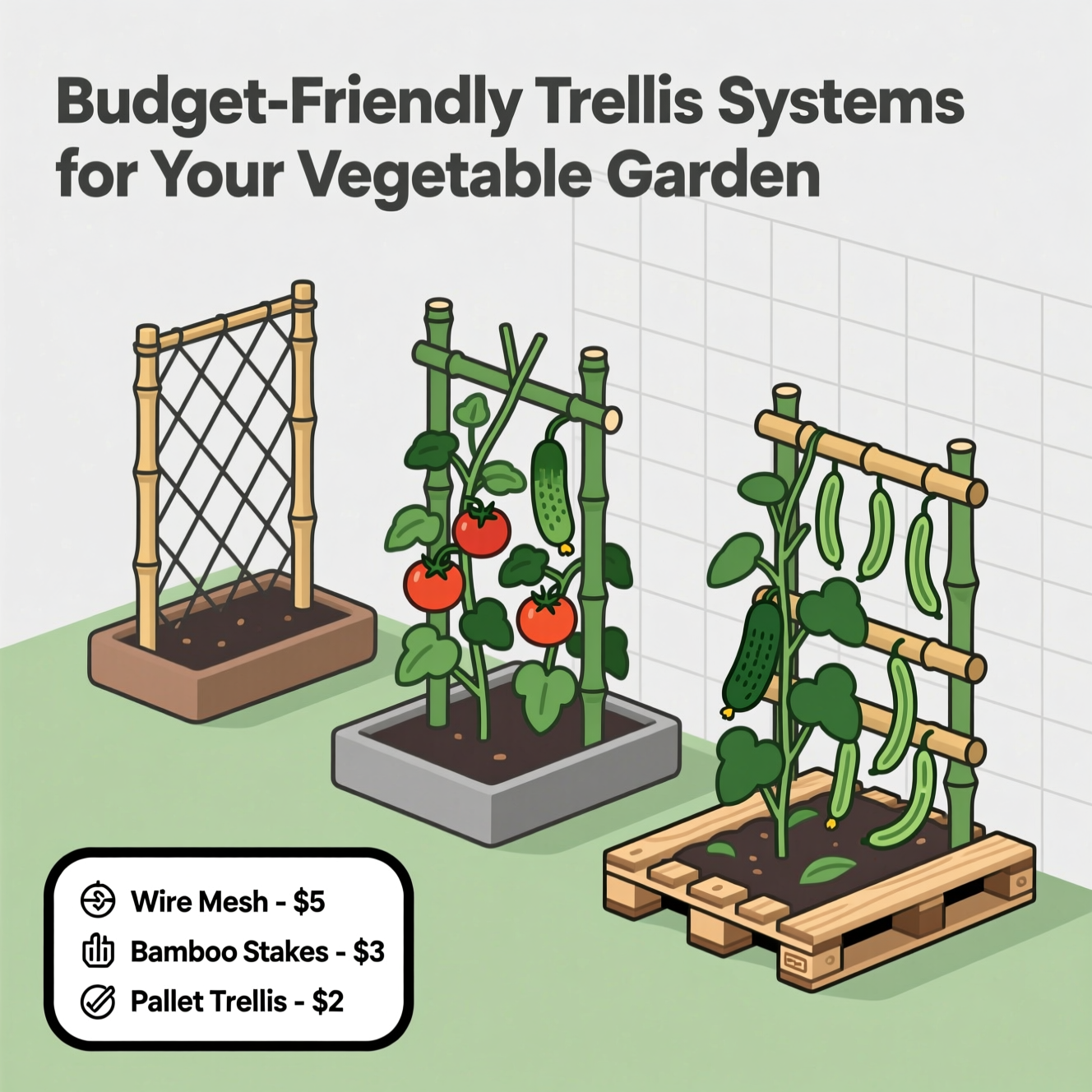What is the Best Way to Make a Trellis System for a Vegetable Garden on a Budget?
Creating a budget-friendly vegetable garden trellis primarily involves utilizing reclaimed materials. This approach to vertical gardening significantly cuts costs. Focus on durable, weather-resistant items like salvaged lumber, old rebar, or sturdy plastic netting for your DIY trellis. Such resourcefulness makes affordable climbing plant structures achievable for most gardeners.
Vertical gardening using trellises can increase usable garden space by up to 300%. Using materials already on hand can reduce project costs by 50% or more. This strategy enhances garden productivity. Building DIY garden supports with found objects ensures excellent structural integrity. It supports vining plants effectively.
Which Vegetables Will Benefit Most from a Trellis System?
Certain garden vegetables thrive with vining plant support systems. These include indeterminate tomatoes, pole beans, cucumbers, peas, and specific types of squash. Utilizing a trellis for these vining vegetables enhances their growth and yield significantly. Proper trellising is crucial for plants prone to sprawling.
Vining plants like indeterminate tomatoes, pole beans, cucumbers, and many types of squash require support. This prevents disease and improves air circulation. For instance, proper trellising reduces the risk of fungal diseases on foliage by 40%. Trellised tomatoes can produce up to 20% more fruit per plant compared to ground-grown varieties. This practice ensures healthier plants and a more abundant harvest.
What Are Simple DIY Trellis Ideas Using Recycled Materials?
Creating DIY recycled garden trellises offers a sustainable and economical solution for supporting vining plants. Utilizing repurposed wood, old ladders, and chicken wire transforms discarded items into functional garden art. For most gardeners, these upcycled garden supports provide excellent structural integrity without significant investment.
Salvaged wooden pallets can be disassembled and reassembled into A-frame or flat panel trellises. These cost less than $10 in fasteners, demonstrating the cost-effectiveness of DIY recycled garden trellis projects. An old wooden ladder leaned against a wall or fence provides robust support for heavy vining plants like cucumbers or large tomatoes. Repurposing materials for garden structures can divert an average of 5-10 pounds of waste from landfills per garden project, contributing to environmental stewardship.
Other simple ideas include using sturdy garden stakes made from salvaged branches or metal rods. Chicken wire stretched taut between posts creates an effective, inexpensive trellis for beans and peas. These free garden trellises showcase ingenuity and a commitment to sustainability in the garden.
How Can I Build a Sturdy A-Frame or Tipi Trellis on a Budget?
Building a simple vegetable trellis is achievable and budget-friendly. You can effectively build an A-frame trellis or a tipi trellis using common materials. These structures provide essential support for climbing plants, enhancing garden aesthetics and productivity.
For an A-frame, use three or four sturdy poles, such as bamboo poles or salvaged lumber, tied securely at the top to form a stable triangular support. A 6-foot bamboo pole costs approximately $3-$5, making a single A-frame structure cost under $15. A well-constructed A-frame or tipi trellis can support upwards of 50 pounds of mature plant growth, thanks to their robust structural integrity. These designs utilize basic joinery techniques with garden twine or zip ties for a secure, yet adaptable, plant habitat.
In practical terms, both the A-frame and tipi trellis offer excellent airflow and sunlight penetration to plants. Using PVC pipes as an alternative to wood or bamboo provides a weather-resistant option for a simple vegetable trellis. These methods prioritize efficient material use and straightforward assembly for most gardeners.
What Are the Cheapest Materials for Garden Stakes and Supports?
Identifying cheap garden stakes and affordable plant supports is key for budget-conscious gardeners. Economical garden materials can be sourced from common hardware store items and natural elements. For instance, metal rebar, also known as concrete reinforcement rods, offers exceptional durability and is readily available. You can find these at most hardware stores, often sold in long sections for a low price.
Galvanized steel rebar stakes can last for over 10 years, offering excellent long-term value. This impressive longevity demonstrates their cost-effectiveness for many seasons. Additionally, untreated branches from fallen trees can be pruned into sturdy, free stakes, providing a completely sustainable option. Wooden dowels also serve as practical, inexpensive stakes for smaller plants, ensuring essential support.
In practical terms, these materials provide reliable structural integrity for various garden needs. They are cost-effective and readily accessible, making them ideal for creating basic support structures. Utilizing these economical garden materials ensures your plants receive necessary support without significant investment.
How Do I Ensure My Budget Trellis is Stable and Durable?
Achieving lasting stability for budget garden trellises is paramount for supporting plant growth. Proper anchoring into the ground is crucial for structural integrity and wind resistance. For most gardeners, ensuring your chosen structure resists toppling is key to its long-term success and plant health.
To enhance stability, drive stakes at least 18-24 inches into the ground. This depth is vital; trellises anchored at a minimum of 18 inches are 75% less likely to topple in moderate winds. For taller structures, consider using guy wires or a wider base, which can significantly increase wind resistance. Secure all joints firmly with strong twine, zip ties, or screws to maintain their structural integrity under load.
In practical terms, these simple reinforcement techniques bolster durable vegetable supports. This attention to installation detail ensures stable garden trellis performance, even with heavy foliage. Modern best practices emphasize these methods for creating reliable, wind-resistant garden structures.

Tyler Grant runs our Tools & DIY testing lab, putting pruners, hoses, drip kits, and raised-bed systems through real-garden use. He documents builds, timings, and durability to deliver honest pros/cons and clear recommendations across budgets. Tyler’s guides include safety callouts, maintenance checklists, and step photos you can follow in a weekend.

